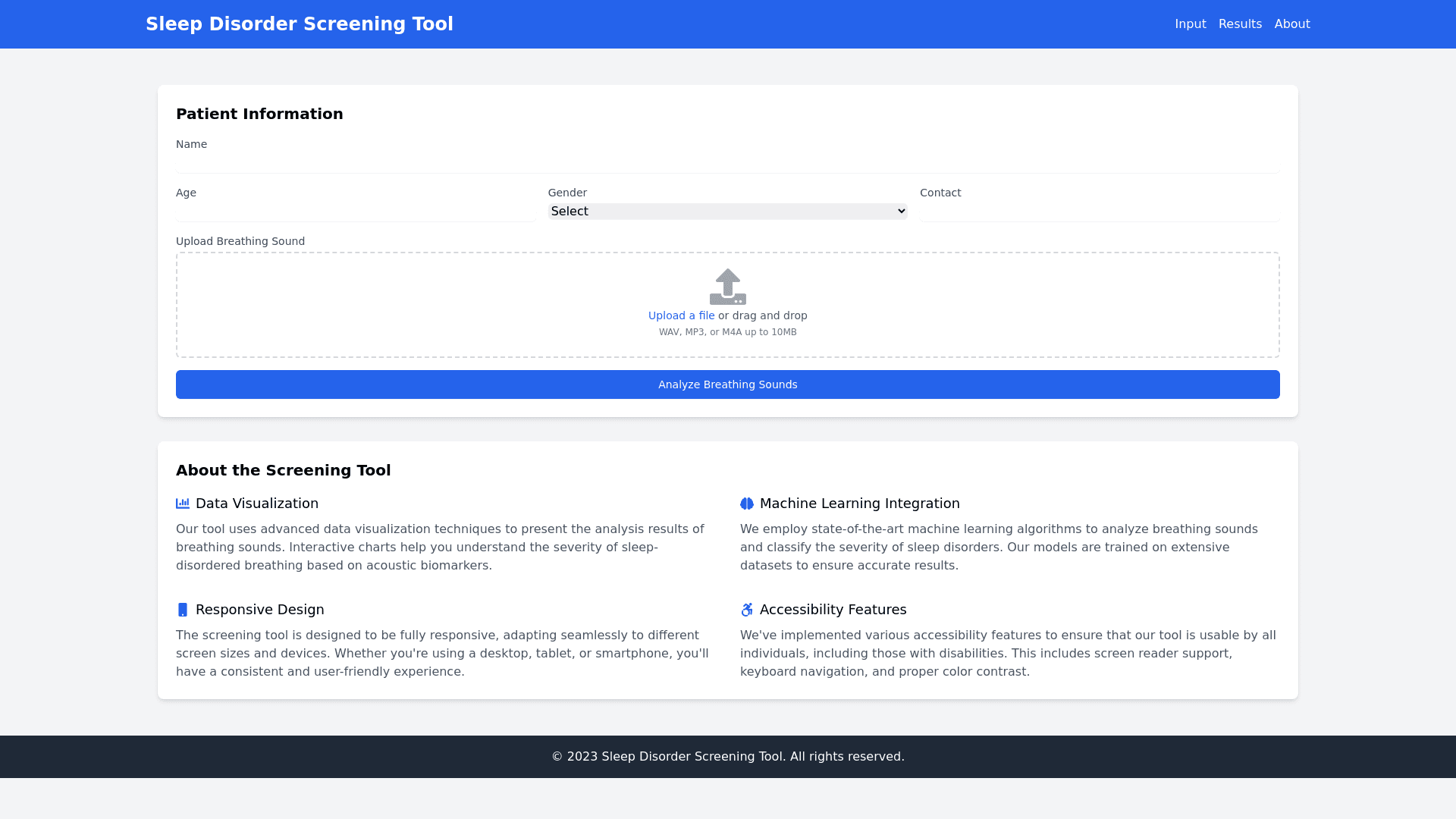Sleep Disorder Screening Tool - Copy this React, Tailwind Component to your project
Abstract Purpose: Breathing sounds during sleep are altered and characterized by various acoustic specifcities in patients with sleep disordered breathing (SDB). This study aimed to identify acoustic biomarkers indicative of the severity of SDB by analyzing the breathing sounds collected from a large number of subjects during entire overnight sleep. Methods: The participants were patients who presented at a sleep center with snor‑ ing or cessation of breathing during sleep. They were subjected to full night polysom‑ nography (PSG) during which the breathing sound was recorded using a microphone. Then, audio features were extracted and a group of features difering signifcantly between diferent SDB severity groups was selected as a potential acoustic biomarker. To assess the validity of the acoustic biomarker, classifcation tasks were performed using several machine learning techniques. Based on the apnea–hypopnea index of the subjects, four group classifcation and binary classifcation were performed. Results: Using tenfold cross validation, we achieved an accuracy of 88.3% in the fourgroup classifcation and an accuracy of 92.5% in the binary classifcation. Experimental evaluation demonstrated that the models trained on the proposed acoustic biomark‑ ers can be used to estimate the severity of SDB. Conclusions: Acoustic biomarkers may be useful to accurately predict the severity of SDB based on the patient’s breathing sounds during sleep, without conducting attended full night PSG. This study implies that any device with a microphone, such as a smartphone, could be potentially utilized outside specialized facilities as a screening tool for detecting SDB. Keywords: Sleep disordered breathing, Acoustic biomarker, Deep neural network, Polysomnography screening test, Apnea–hypopnea indexAbstract Purpose: Breathing sounds during sleep are altered and characterized by various acoustic specifcities in patients with sleep disordered breathing (SDB). This study aimed to identify acoustic biomarkers indicative of the severity of SDB by analyzing the breathing sounds collected from a large number of subjects during entire overnight sleep. Methods: The participants were patients who presented at a sleep center with snor‑ ing or cessation of breathing during sleep. They were subjected to full night polysom‑ nography (PSG) during which the breathing sound was recorded using a microphone. Then, audio features were extracted and a group of features difering signifcantly between diferent SDB severity groups was selected as a potential acoustic biomarker. To assess the validity of the acoustic biomarker, classifcation tasks were performed using several machine learning techniques. Based on the apnea–hypopnea index of the subjects, four group classifcation and binary classifcation were performed. Results: Using tenfold cross validation, we achieved an accuracy of 88.3% in the fourgroup classifcation and an accuracy of 92.5% in the binary classifcation. Experimental evaluation demonstrated that the models trained on the proposed acoustic biomark‑ ers can be used to estimate the severity of SDB. Conclusions: Acoustic biomarkers may be useful to accurately predict the severity of SDB based on the patient’s breathing sounds during sleep, without conducting attended full night PSG. This study implies that any device with a microphone, such as a smartphone, could be potentially utilized outside specialized facilities as a screening tool for detecting SDB. Keywords: Sleep disordered breathing, Acoustic biomarker, Deep neural network, Polysomnography screening test, Apnea–hypopnea index
